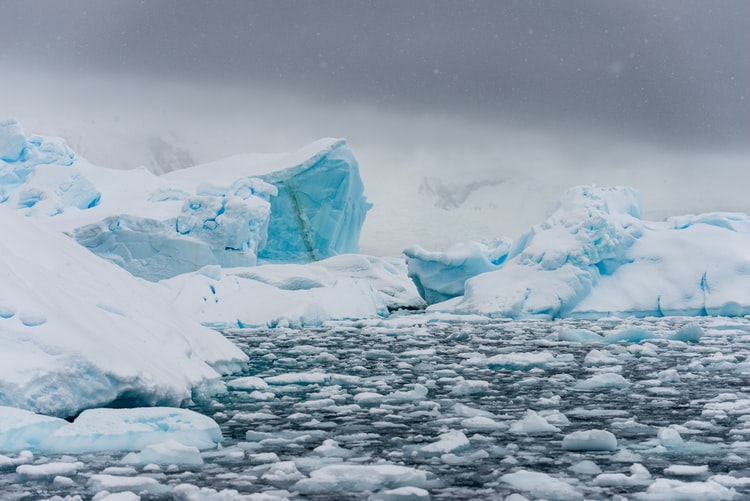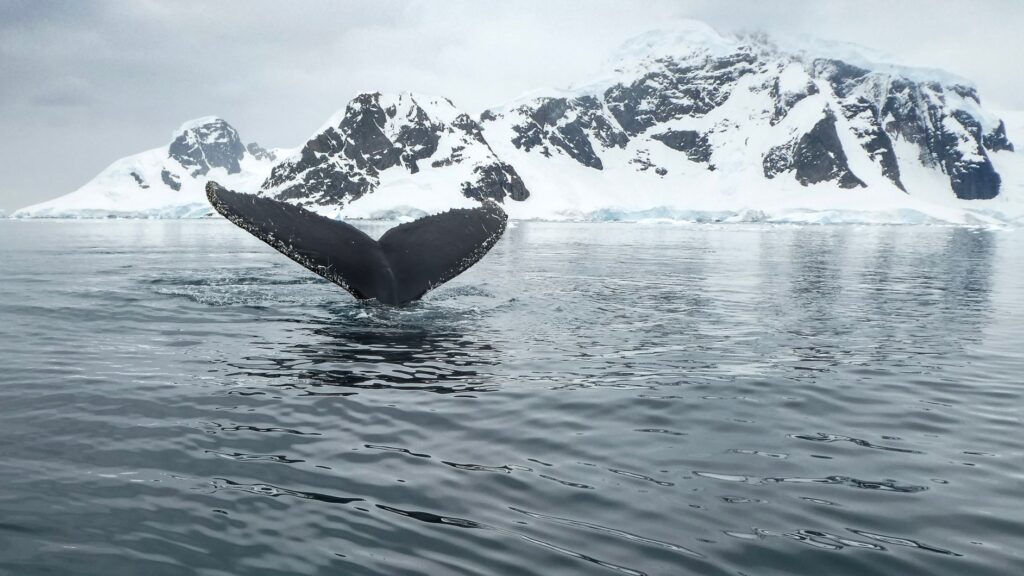the southern ocean as a sentinel of climate change
Words by Sadiyah Rawat

The Southern Ocean (SO) is the broad ocean surrounding Antarctica. The northern boundary of the SO is at latitude 60° south and the southern limit is the Antarctic continent. Home to the world’s largest and strongest current and a mighty carbon sink, the Southern Ocean has a massive influence on our climate. However, rising ocean temperatures and melting ice sheets pose a threat to the stability of the SO and consequently, the stability of the Earth’s climate is now at risk. The Southern Ocean is perhaps the most important ocean in the world and its protection should be a priority for the governments of the world.
The Southern Ocean is central to the circulation of the global ocean and it fuels the world’s oceans through the Antarctic Current. The SO, unlike the other oceans, is not enclosed by any landmass or continent which allows for the Antarctic Current to be circumpolar i.e., it encircles the Antarctic continent, hence the name Antarctic Circumpolar Current (ACC). The ACC, dubbed as the “mightiest current in the oceans” is the largest and strongest current in the world and is the only current that travels completely around the globe. The ACC connects the Indian, Pacific and Atlantic Ocean basins. As a result, the ACC is the primary means by which heat, salt and nutrients are transported across ocean basins making it a crucial part in the global ocean conveyor belt. It regulates the capacity of the ocean to store and transport heat, salt, carbon and many other properties and is responsible for the stable climate we live in today. The SO is also the main source of nutrients to the low latitude ocean. In this way, it controls the productivity of the global ocean.

The Southern Ocean is a sink of carbon. This is due to the phytoplankton inhabiting the surface layers of the SO. Phytoplankton are microscopic marine plants that undergo photosynthesis, a process whereby they absorb carbon dioxide (CO2) from the atmosphere to get energy in order to grow. Since the industrial revolution, atmospheric CO2 concentration has been increasing due to the burning of fossil fuels. The concentration of CO2 in the surface ocean has also increased due to human activities. Currently the SO is a net sink of anthropogenic CO2 (i.e. it sucks up human produced carbon emissions) . It is buffering the rise in atmospheric CO2. In fact, it is responsible for 51% of ocean uptake of anthropogenic CO2. The SO effectively slows the rate of climate change by absorbing the greater portion of anthropogenic CO2. However, the SO’s rate of absorbing CO2 is decreasing and due to the large amount of CO2 being emitted in the last decade, it is no longer as efficient. This has dire consequences for the Earth’s stable climate.

The annual formation and melting of Antarctic sea ice in the SO has a great impact on our climate. When sea ice forms in winter, it generates the Antarctic Bottom Water (AABW). AABW is the coldest water mass on earth that sinks rapidly to the depths of the ocean upon formation (see illustration below). AABW flows throughout the global ocean regulating global atmospheric temperatures. But the SO is changing rapidly. It is producing half the amount of AABW that it was in 1970, and decades of observations suggest that the SO is warming and becoming fresher. Increasing sea ice melting and precipitation in Antarctica, due to increasing atmospheric temperatures, results in surface waters being fresher and therefore less dense. These fresher surface waters are less likely to sink and consequently the formation of AABW is reduced. This will slow down the global conveyor belt, i.e., the deep ocean current system that distributes heat throughout the planet which will have a disastrous impact on our climate.
Moreover, ocean warming increases the melting of Antarctic ice sheets which decreases the planet’s albedo. Albedo, in this case, refers to the amount of solar radiation reflected back into space by Earth’s reflective surfaces such as ice sheets and ice caps. The loss of albedo enhances global warming. The Antarctic ice sheet is the largest single mass of ice on Earth and increased ice sheet melting has dangerous implications in terms of sea level rise, another disastrous consequence of a changing climate.


The Southern Ocean plays a fundamental role in regulating the Earth’s climate and is a key component of the world’s ocean heat regulating system. It is disproportionately important to our planet’s health. With the climate changing so rapidly, more research that enhances our understanding of the SO, to help us predict future changes and implications for our climate, is crucial. We also desperately need the collaboration of governments around the world to pass effective climate legislation to decrease global anthropogenic carbon emissions to have a fighting chance at saving our oceans and to preserve life on our blue planet.

about the author
Sadiyah Rawat, originally from Mauritius, is an oceanographer, dive master and freediver. Her research interests are the effects of climate change on marine ecosystems, more specifically, the Antarctic Large Marine Ecosystem. She is a passionate ocean advocate, an avid hiker and loves beach walks.
